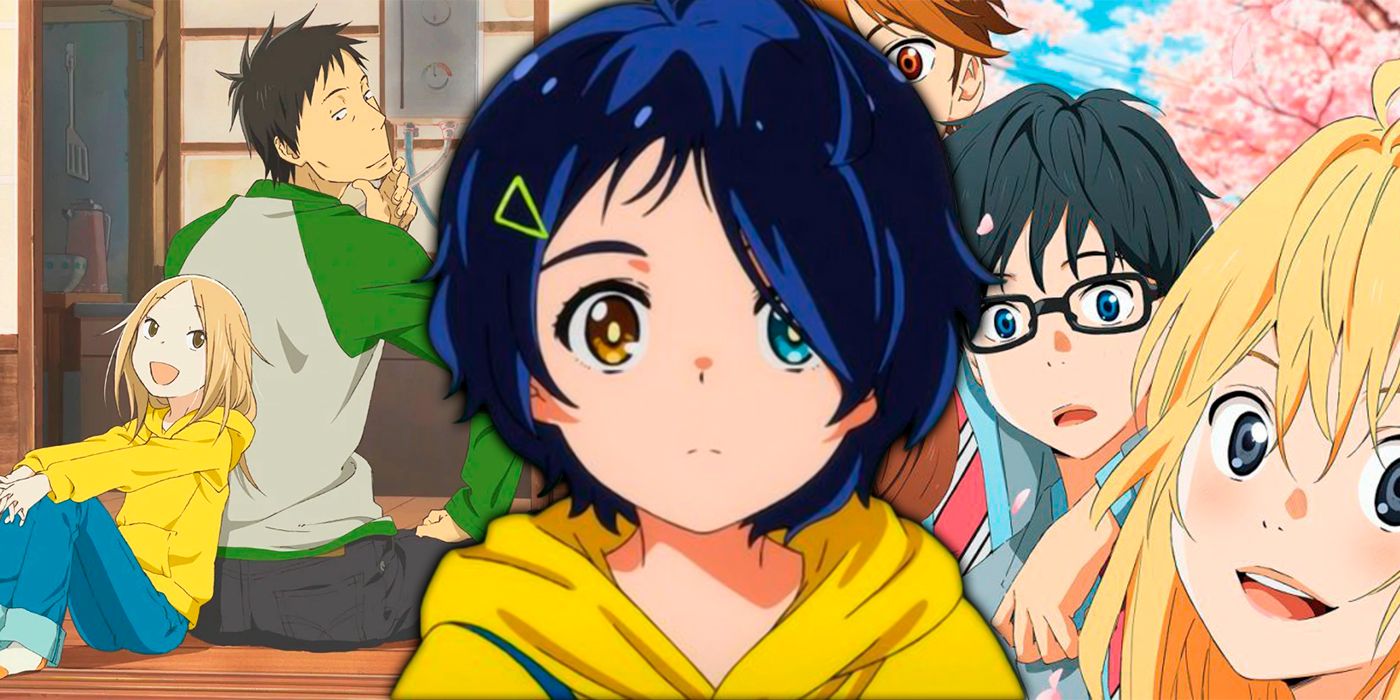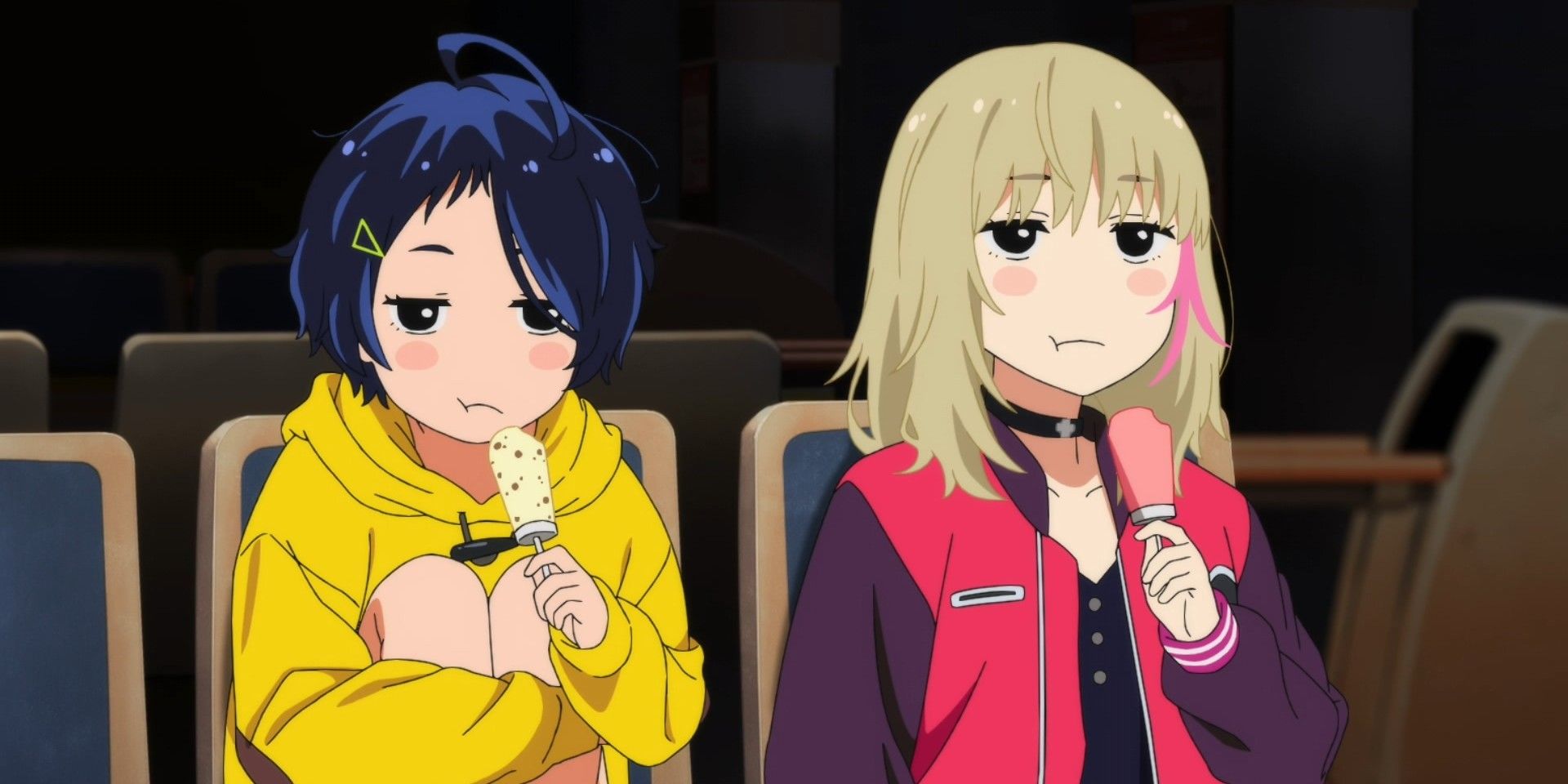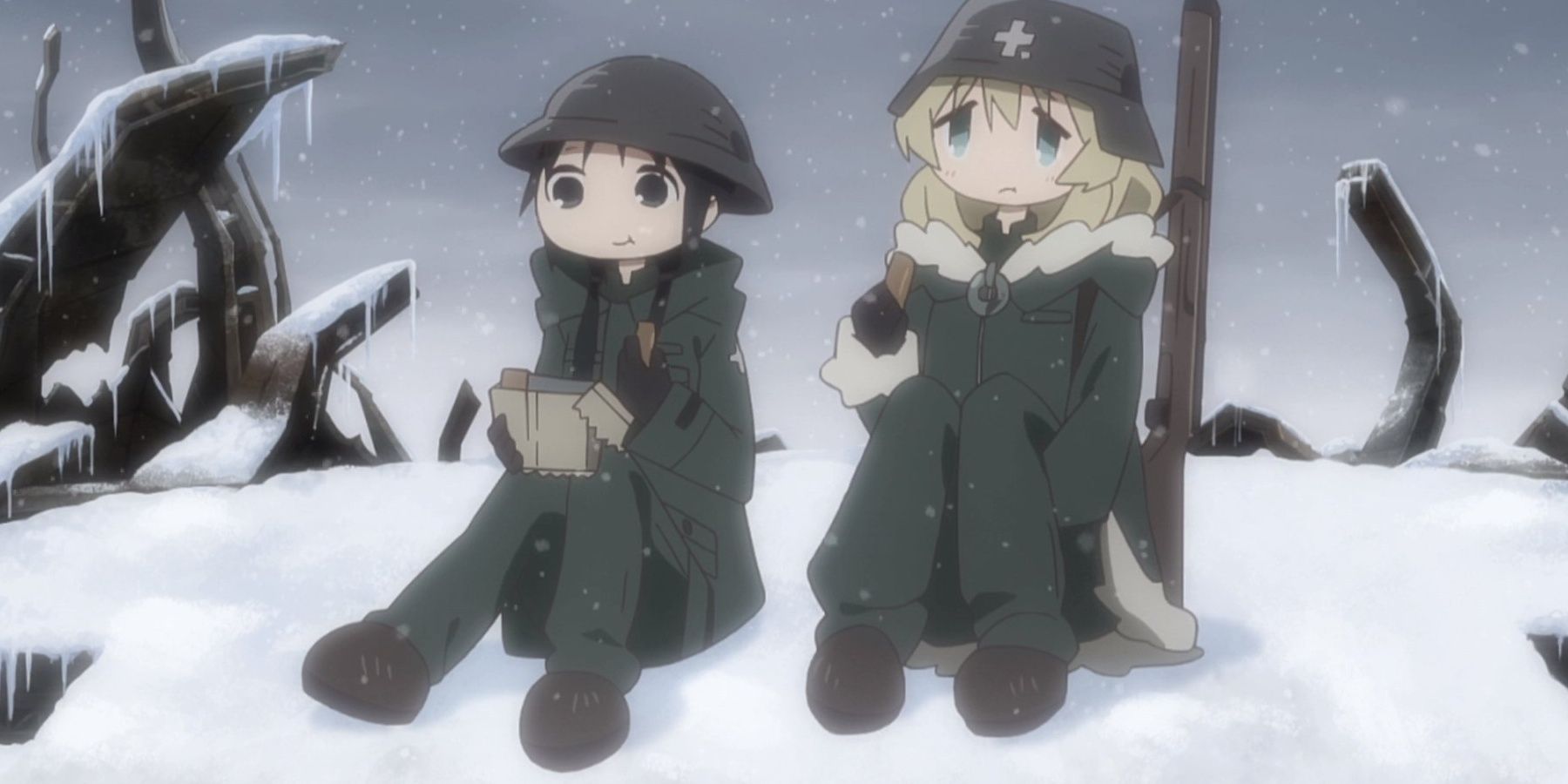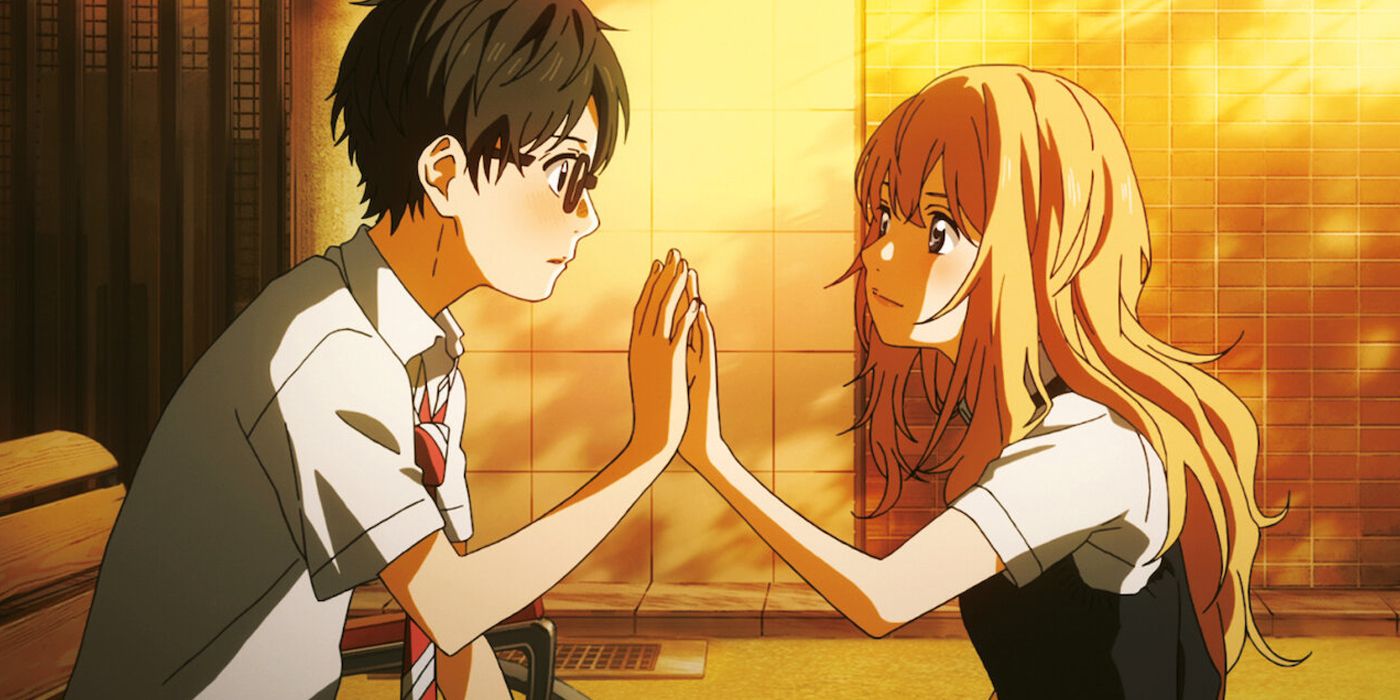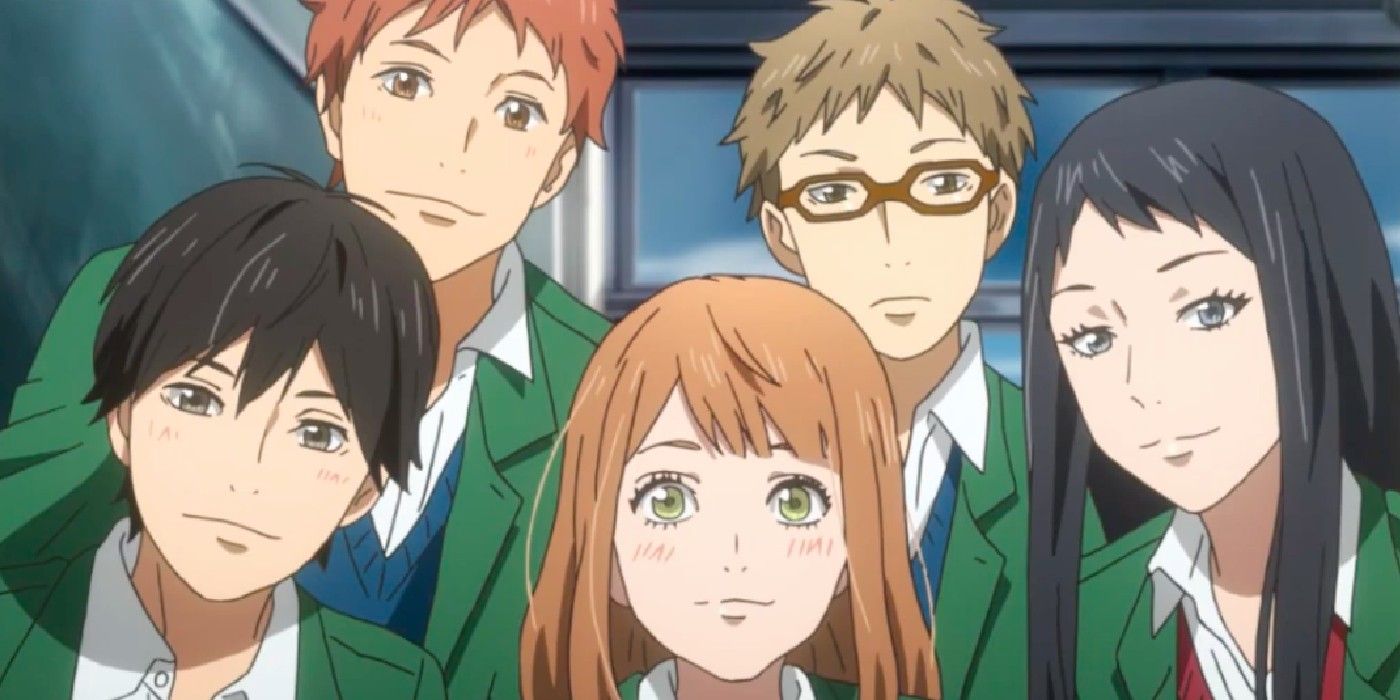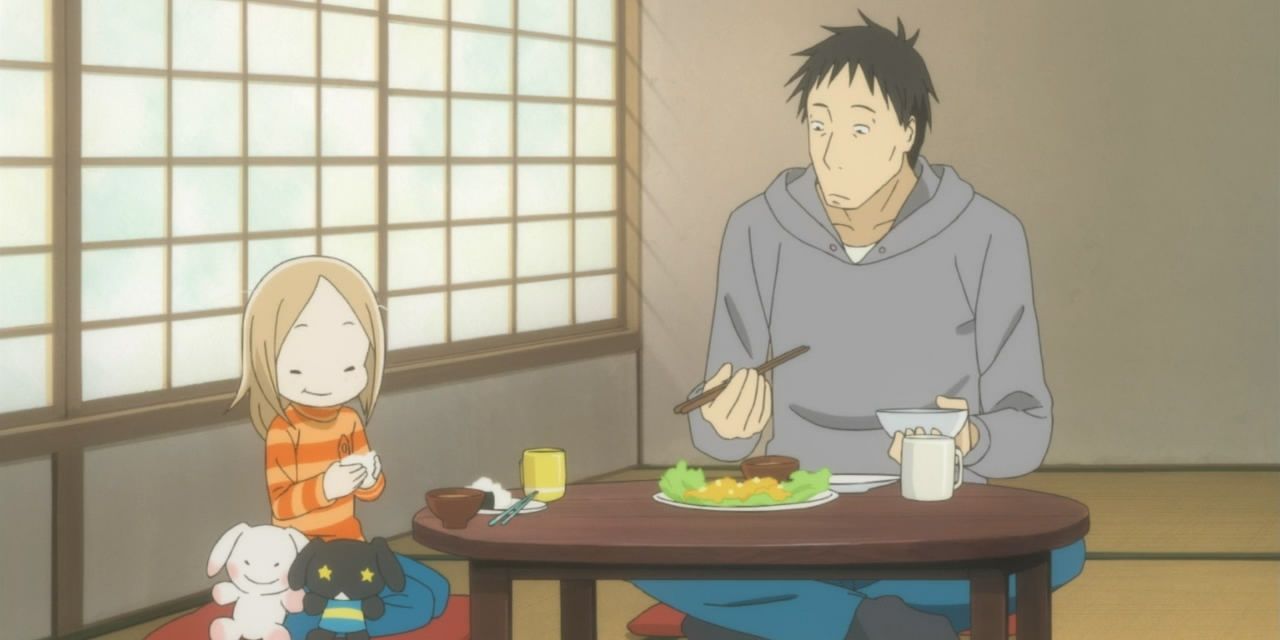The following article contains discussion of suicide and self-harm.
Slice of life as a genre is generally accepted as a pretty lighthearted display of everyday life with no major conflicts. It’s often grounded within a strong comedic premise, characterized by bright colors and cheerful characters. Series like Nichijou and Wotakoi: Love Is Hard for Otaku are great examples of a traditional take on this genre.
In recent years, anime studios have begun experimenting with incorporating darker themes into what had previously been established as a bright genre. This is in line with the growing maturity of audiences as well as the growing diversity of anime. Combining slice of life with dark themes adds extra depth to a series, without making it so heavy that it could be hard to watch. Here are some of the best examples of slice of life anime that have dark undertones.
Wonder Egg Priority Looks Into the Inner Demons of Humanity
As one of the most recent adaptations, Wonder Egg Priority follows the story of Ai Ooto after the suicide of her best friend, Koito Nagase. Following the instructions of a mysterious entity, Ai purchases a Wonder Egg, which enables her to fight off people’s trauma, regrets and fears as fantasized enemies in a dream realm. With each person she successfully saves from their demons, she grows one step closer to saving her best friend.
Despite the deceptively bright colors and youthful protagonists, Wonder Egg Priority explores the depths of humanity’s inner demons through their dream realms. A sexually abused girl facing off against the monsterized teacher that abused her. A school gymnast standing up against a gym teacher that pressurised her. It’s made even more poignant and bittersweet when it’s revealed that all the victims are already dead.
Girls’ Last Tour Explores a Post-Apocalyptic World
Girls’ Last Tour is set amid the rubble of a once-thriving city torn apart by war. In this post-apocalyptic setting, Chito and Yuuri seem to be the only survivors as they ride through the desolation on their motorbike, scavenging for food and contemplating life before the war.
This entire anime is lighthearted and cutesy, detailing their everyday adventures and discoveries. However, by framing their story from a third-person perspective, it offers a unique insight into the reality of the situation beyond what the girls themselves might perceive.
Your Lie in April Treasures the Fragility of Life
Initially presented as a typical slice of life school anime, Your Lie in April quickly takes a dive into the deep end. It is revealed that prodigious pianist Kousei Arima can no longer hear the sound of the piano after his mother’s death. Amid themes of childhood trauma, Kousei finally regains color in his life when he meets the upbeat violinist Kaori Miyazono, who hides a secret of her own beneath her cheerful facade.
Interspersed between peaceful scenes of everyday school life are flashbacks to childhood trauma and the realities of dealing with a terminal illness. This duality in dynamics is executed beautifully. Despite the undercurrent of darker themes, the overall tone of this series remains hopeful, playing to the strengths of the slice of life genre.
Orange Tackles Heavy Themes of Mental Health
At its core, Orange tells a story of regret. One day, 16-year-old Naho Takamiya receives a strange letter from herself 10 years in the future, detailing the regrets her future self wished to fix. Among those is one related to the new transfer student, Kakeru Naruse, who is no longer alive in the future. Given the opportunity to fix past mistakes, Naho strives to save Kakeru before history repeats itself.
The themes of Orange are made a lot more significant because its setting is grounded in reality. Mental health leading to suicide is often very subtle and hard to notice, and this story accurately portrays that. It doesn’t overdramatize the issue but invites the audience to look out for signs and clues along with the protagonists.
Usagi Drop Breaks the Stigma of Being a Single Parent
Anime can explore a lot of dark themes, but the topic of being a single parent is rarely touched upon. Usagi Drop follows 30-year-old bachelor Daikichi Kawachi as he tries to raise Rin, his grandfather’s illegitimate daughter with no child-rearing experience whatsoever. Daikichi and Rin have a very unique father-daughter relationship. Forced together by circumstance, both are trying to adjust to this new life and relationship dynamic. It’s endearing to see how they learn and grow together through everyday annoyances and troubles.
Slice of life anime doesn’t just have to be simple stories of everyday fun. When used in conjunction with darker themes, they offer a much more complex process of storytelling which sets these series apart from others.
For more information on the warning signs and prevention of suicide, click here. If you or someone you know is in emotional distress or considering suicide, call the National Suicide Prevention Lifeline at 1-800-273-TALK (8255). If you live outside the U.S., click here for a list of international hotlines.

